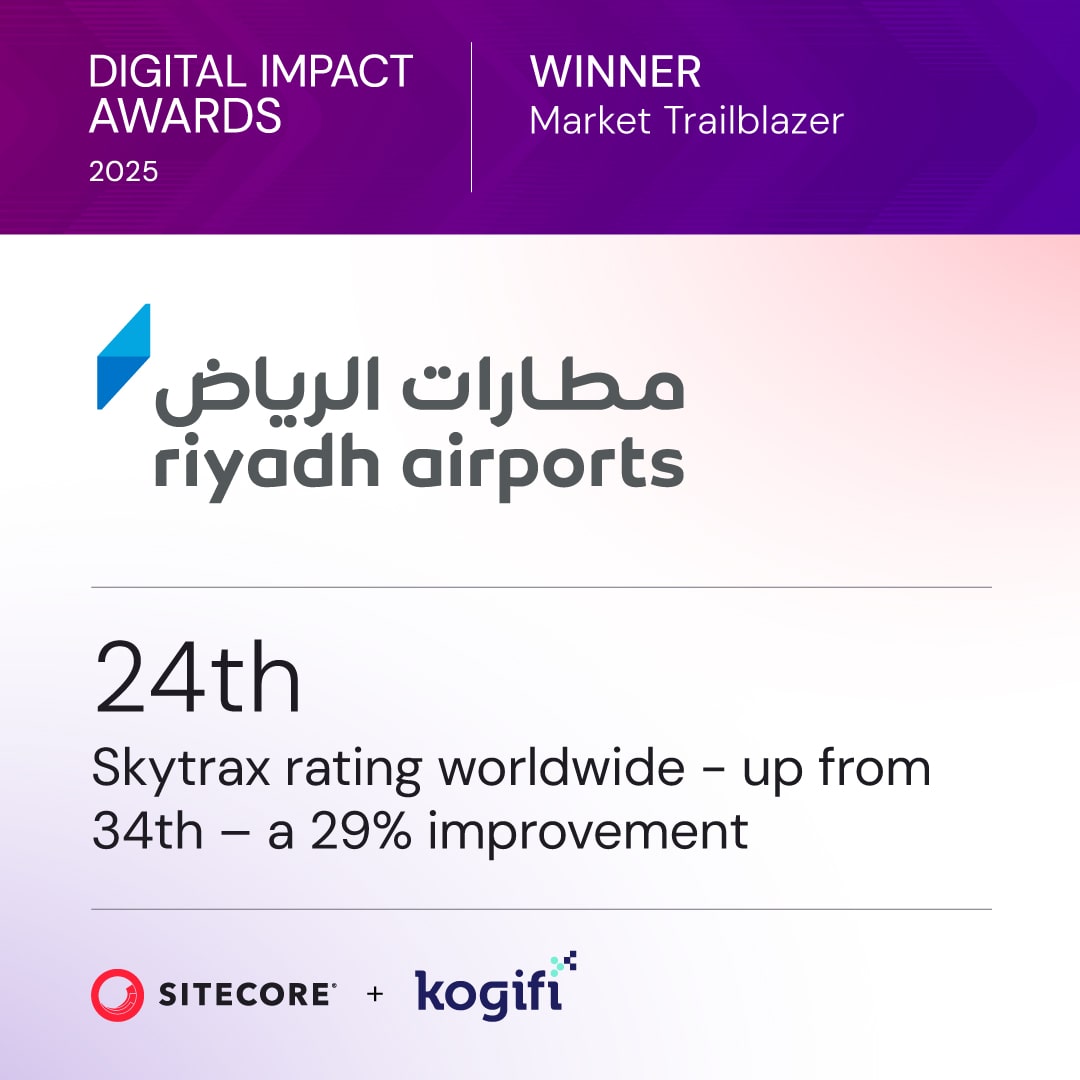Vendor risk evaluation is critical for platform migrations. Why? Because third-party vendors often need deep access to sensitive systems and data, creating potential vulnerabilities. Without proper assessment, risks like data breaches, business disruptions, and regulatory penalties can derail your migration.
Here’s a quick breakdown of how to manage vendor risk effectively:
- Involve Key Stakeholders: Build a cross-functional team (IT, compliance, legal, finance, etc.) to assess risks comprehensively.
- Set Risk Tolerance: Define acceptable risk levels based on data sensitivity, vendor access, and potential impact.
- Categorize Vendors: Prioritize vendors into high, medium, and low-risk tiers to focus resources where they’re needed most.
- Evaluate Key Criteria: Assess vendor security, compliance, business continuity plans, and technical expertise.
- Monitor Continuously: Use automated tools and clear escalation processes to track risks during and after migration.
Key Stats:
- 98% of organizations report third-party data breaches in the last two years.
- The average cost of a data breach is $4.88 million.
- 61% of companies experienced vendor-related incidents last year.
Third-Party InfoSec Vendor Risk Assessment - Show and Tell Walkthrough
Step-by-Step Guide to Vendor Risk Assessment
Conducting a vendor risk assessment involves a well-structured process that unites the right expertise, establishes clear guidelines, and prioritizes vendors based on their potential impact. This approach is essential for ensuring a smooth platform migration.
Assembling Stakeholders for Comprehensive Risk Evaluation
The first step is to bring together a cross-functional team. Vendor risk management thrives on input from various departments, including IT, cybersecurity, legal, compliance, procurement, finance, business operations, and senior management. Each group offers unique insights - IT teams can pinpoint technical vulnerabilities, while legal and compliance teams focus on meeting contractual and regulatory obligations.
To organize these responsibilities, the "Three Lines of Defense" model is particularly effective. This model breaks down roles as follows:
- First Line: Operational teams that directly interact with vendors.
- Second Line: Risk management and compliance teams that oversee processes.
- Third Line: Independent auditors and internal teams conducting objective evaluations.
Executive leadership also plays a key role by championing vendor risk management efforts and ensuring the necessary resources are allocated. Their involvement highlights the importance of the process and reinforces accountability.
Clearly defining roles and responsibilities for each stakeholder group is critical. Open communication further enhances transparency and ensures that all perspectives contribute to a more thorough risk evaluation.
Defining Risk Tolerance and Crafting Assessment Frameworks
Before diving into assessments, it’s important to establish clear risk tolerance levels and an assessment framework. Start by identifying how much residual risk your organization is willing to accept for different vendor relationships. Factors like data sensitivity, service importance, and potential impact should guide this process. By documenting these thresholds in measurable terms, you can ensure consistency across evaluations.
Industry-standard frameworks provide a strong foundation for vendor risk assessments. For instance:
- The NIST Cybersecurity Framework offers detailed guidance for assessing cybersecurity risks.
- ISO 27001 provides globally recognized standards for managing information security.
- Regulated industries might require adherence to standards like SOC 2 Type II or HIPAA.
Standardized tools like the Consensus Assessments Initiative Questionnaire (CAIQ) or the Standardized Information Gathering (SIG) questionnaire can simplify the evaluation process. Risk scoring models are also useful for measuring and comparing risks. By combining quantitative data, such as financial stability metrics, with qualitative insights like security practices, you can build a well-rounded risk profile.
Once your risk tolerance and framework are in place, it’s time to classify vendors based on their criticality.
Categorizing Vendors Based on Criticality
Not all vendors carry the same level of risk, especially during a platform migration. Using a tiered approach allows you to focus more resources on high-risk vendors while streamlining assessments for lower-risk ones.
- High-Risk Vendors: These vendors have access to sensitive data or critical systems. They require in-depth evaluations, including detailed reviews of security, financial health, and operational practices.
- Medium-Risk Vendors: These vendors provide important services but have limited access to sensitive systems. Standard procedures, such as security questionnaires, reference checks, and basic compliance verification, are typically sufficient.
- Low-Risk Vendors: These vendors have minimal access to sensitive data or systems. Assessments can focus on basic compliance and contractual obligations.
To ensure consistency, categorize vendors based on factors like data sensitivity, access levels, business importance, regulatory requirements, and potential disruption risks. Documenting these criteria helps maintain uniformity across assessments.
Tracking vendors, the services they provide, the data they access, and their risk ratings in a centralized system can improve decision-making and reveal concentration risks.
Keep in mind that vendor risk profiles are not static. Changes in a vendor’s services, your business needs, or regulatory updates can shift their risk category. A flexible categorization system allows your oversight to adapt as circumstances evolve.
Key Criteria for Evaluating Vendors During Migrations
When moving platforms, choosing the right vendor is critical to avoid unnecessary risks. The following criteria can help pinpoint potential vulnerabilities and ensure your migration goes smoothly.
Security and Data Protection Standards
Security is the backbone of any successful migration. Vendors need to show they have strong safeguards in place to protect sensitive data. This is especially important when working with enterprise platforms like Sitecore, Adobe Experience Manager, or SharePoint, where confidential business information is often exchanged between systems.
Key security measures include:
- Secure system configurations: Systems should be well-documented and maintained, with unique user IDs and secure login credentials.
- System hardening and vulnerability assessments: Regular checks are vital, especially since 43% of organizations reported data breaches in the past year, with the average breach costing $4.24 million.
- Encryption protocols: Data must be protected both in transit and at rest using strong encryption and secure key management. Transmission protocols like TLS should be mandatory.
"Any vendor who has access to SolarWinds data classified as Personal Data or higher are expected to demonstrate their security policies, processes, and procedures and prove that they are able to provide adequate protection of such data, including against misuse or compromise."
Physical security is just as important. Vendors should restrict access to critical facilities and have incident response processes in place. Regular third-party audits, such as SSAE16 SOC1 and SOC2, can validate a vendor's security practices and their ability to handle sensitive data responsibly.
Finally, ensure vendors meet all relevant regulatory standards.
Compliance and Regulatory Requirements
Regulatory compliance goes beyond signing contracts. Vendors must prove they adhere to laws like GDPR, HIPAA, or PCI DSS, depending on your industry and the type of data involved. Request certifications and audit reports to confirm compliance. For higher-risk vendors, consider conducting on-site audits or reviewing independent third-party reports.
Modern supply chains are complex, making centralizing vendor and contract data essential. Quick access to this information during audits ensures vendors stick to their commitments. This is especially important as 83% of data migration projects fail or exceed their budgets and timelines.
Effective compliance management includes:
- Audit and inspection rights
- Dispute resolution mechanisms
- Indemnification clauses for regulatory violations
Contracts should also outline how compliance issues will be handled and provide the option to terminate agreements if necessary.
Once compliance is verified, assess whether vendors can maintain operations without disruption.
Business Continuity and Technical Expertise
A vendor's ability to keep operations running during unexpected events is crucial. During migrations, unplanned downtime can cost nearly $9,000 per minute.
Business continuity planning should include:
- Recovery objectives: Review vendors' Recovery Time Objectives (RTO), Recovery Point Objectives (RPO), and Maximum Tolerable Downtime (MTD) to understand how quickly they can restore services and how much data might be lost during disruptions.
- Disaster recovery plans: Vendors should have clear, documented plans outlining alternate work sites and testing procedures. Regular testing ensures these plans remain effective .
When it comes to technical expertise, vendors should demonstrate a deep understanding of your enterprise CMS platforms. Look for experience in:
- Implementations and upgrades
- Troubleshooting and resolving complex issues
- Documented success with platforms like Sitecore or Adobe Experience Manager
For example, companies like Kogifi, known for their expertise in enterprise CMS solutions, can provide confidence in their technical capabilities.
Vendors should also have clear communication protocols for disruptions. This includes defined notification procedures and designated points of contact to keep you informed about any issues affecting your migration timeline or data integrity.
"The aim of this assessment is not to pass the responsibility of a failure to the vendor, but to adequately assess the risk and treat it within acceptable time frames and limits or avoid the vendor." - Samuel Shanthan, CISM, CIPM, CPRM, MBCI
Finally, evaluate how vendors maintain and update their business continuity plans. Frequent updates show a commitment to staying prepared as conditions change. For technical expertise, consider asking subject matter experts to assess vendors’ capabilities. This can help identify weaknesses early, reducing the risk of problems during your migration.
sbb-itb-91124b2
Continuous Monitoring and Risk Mitigation
Vendor risk assessment isn’t a one-and-done task, especially during platform migrations. Continuous monitoring plays a key role in identifying new threats and adapting your risk management strategies. With over 30% of data breaches tied to third-party incidents and 54% of companies reporting vendor-related breaches in 2023, staying vigilant is essential to safeguard your enterprise platforms.
Taking a reactive approach can lead to costly disruptions, while proactive monitoring ensures a smoother migration process. A well-known example is the 2013 Target cyberattack, where hackers exploited a refrigeration vendor’s weak infrastructure. The breach ended up costing Target over $162 million and $18.5 million in settlements by 2017. This case underscores the importance of robust, automated risk monitoring systems.
Implementing Automated Risk Monitoring Tools
In today’s complex environment, manual monitoring simply can’t keep up. Automated tools streamline workflows, reduce human errors, and provide better visibility into vendor activities during your migration. Real-time alerts are particularly valuable - they can flag unusual activities like credential theft attempts or unauthorized access, giving you the chance to act quickly.
Integrated enterprise risk management (ERM) systems and modern contract management tools offer centralized dashboards that bring together vendor data, contracts, and risk assessments. When powered by AI, these tools can further enhance accuracy by reducing the need for manual data entry.
Take Microsoft’s Supplier Security and Privacy Assurance program as an example. It ensures suppliers meet strict privacy and security standards, requiring high-risk vendors to provide independent compliance verification. Companies like Kogifi, specializing in enterprise CMS solutions and platform migrations, often incorporate automated monitoring into their services. This ensures continuous oversight throughout even the most complex migration projects. However, automation alone isn’t enough - clear reporting and escalation processes are critical for resolving risks effectively.
Establishing Clear Reporting and Escalation Processes
Effective risk management also depends on well-defined reporting and escalation procedures. These processes should outline exactly who needs to be notified when specific risk thresholds are crossed, how quickly they must respond, and what actions they’re authorized to take. This is particularly important during platform migrations, where delays can cause major disruptions.
J.P. Morgan’s 2014 data breach serves as a cautionary tale. In response, the company revamped its compliance procedures, introduced continuous monitoring, and invested heavily in fraud prevention solutions. Their experience highlights the value of strong reporting structures and proactive risk management.
Documentation is another key element. Every incident should be logged with details about the vendor, the nature of the risk, and the steps taken to address it. This creates a knowledge base that can guide future decision-making. Regular compliance reviews and audits, framed as opportunities for improvement rather than punitive measures, can strengthen vendor relationships and improve overall risk management.
Additionally, scheduling regular check-ins with key vendors during your migration can be a game-changer. These meetings allow you to review performance metrics, address concerns, and adjust strategies as needed - helping you stay on track with both your migration goals and your data security priorities.
Best Practices for Vendor Risk Management in Platform Migrations
Building on a detailed risk assessment process, these best practices help secure your migration journey by embedding consistent risk management practices at every step.
Successfully managing vendor risk during platform migrations requires a strategic and well-documented approach. Organizations that prioritize thorough documentation, engage with specialized experts, and align their efforts with internal policies create a strong framework for managing risks effectively.
Keeping Documentation Thorough and Accessible
Clear and organized documentation is the foundation of managing vendor risks. It ensures accountability, compliance, and a clear record of potential threats and mitigation strategies. Essential elements include a risk register, mitigation plans, and incident reports. To make documentation work for you:
- Use standardized templates to ensure consistency.
- Assign clear ownership for each risk to avoid confusion.
- Leverage risk management tools for real-time updates.
- Maintain version control and audit trails to ensure accuracy during reviews.
It's also important to make documentation accessible to both technical and non-technical teams, fostering collaboration and understanding across departments. With this solid base, you’ll be better prepared to work with specialized partners.
Partnering with Migration Specialists
Teaming up with experienced migration professionals can significantly ease vendor-related challenges. Specialists like Kogifi bring valuable expertise to the table, helping manage vendor relationships and addressing risks head-on. These experts often have pre-established vendor connections, which can speed up issue resolution and prevent risks from escalating. Their deep understanding of technical implementation, compliance, and risk management ensures your migration stays on track and avoids unnecessary disruptions.
Aligning with Internal Policies and Standards
Vendor risk management works best when it’s integrated with your organization’s overall risk and compliance framework. This alignment ensures consistency and long-term success. Start by developing a vendor risk management policy that:
- Clearly defines roles and responsibilities.
- Outlines due diligence processes for vendor selection.
- Sets clear expectations for security, compliance, and performance.
Form a cross-functional team with members from IT, cybersecurity, legal, compliance, procurement, and finance to establish and enforce protocols for incident response. Regular training and periodic reviews by senior management are crucial to keeping everyone informed and prepared for new challenges.
To further streamline the process, consider tools like centralized vendor portals for documentation, automated audits, and performance tracking. By embedding these practices into your broader migration strategy, you can minimize disruptions and keep operations running smoothly.
Conclusion: Achieving Safe and Successful Platform Migrations
Having a clear vendor risk evaluation strategy is key to reducing disruptions, maintaining compliance, and meeting business goals. The framework outlined here - covering collaboration with stakeholders, defining risk tolerance, and categorizing vendors - helps identify potential issues early and reduces gaps through automated monitoring and standardized reporting.
To build on this foundation, tapping into specialized expertise can make all the difference. Partnering with experts like Kogifi, known for their deep knowledge of platforms like Sitecore, Adobe Experience Manager, and SharePoint, ensures access to proven methods and dependable 24/7 support. This approach gives organizations a proactive edge in managing risks as they arise.
Detailed documentation and ongoing monitoring provide lasting value even after migration is complete. For example, if a risk matrix score exceeds 6 on a 10-point scale, immediate remediation should follow. Additionally, leveraging vendor intelligence profiles built from 550,000 data points supports smarter, data-driven decisions.
Looking beyond the immediate migration, a strong vendor evaluation framework becomes a long-term strategic tool. It not only protects current operations but also lays the groundwork for future digital initiatives and risk management. By adopting these practices, your organization ensures smooth migrations today while setting the stage for sustained success in the years ahead.
FAQs
How can organizations effectively manage vendor risks during a platform migration?
To manage vendor risks effectively during a platform migration, it's important to take a well-planned and proactive approach. Start by performing a detailed risk assessment to pinpoint potential issues, such as cybersecurity vulnerabilities, data privacy concerns, operational reliability gaps, or financial uncertainties. Engaging vendors early in the process helps uncover these risks and allows time to develop contingency plans.
Consistent monitoring throughout the migration is key to identifying and addressing any emerging risks. Clear communication with vendors and thorough documentation of each step are essential for maintaining accountability and ensuring everything stays on track. By staying alert and flexible, organizations can reduce disruptions and make the migration process as seamless as possible.
What key factors should you consider when evaluating vendor risk during a platform migration?
When you're evaluating vendor risk during a platform migration, focusing on a few key areas can make all the difference in ensuring a smooth and secure process. Start by looking into the vendor’s cybersecurity protocols, data privacy policies, and their compliance with industry regulations. These factors are essential for protecting sensitive information and staying within legal boundaries.
You'll also want to check the vendor’s financial health, operational dependability, and overall reputation. This ensures they’re capable of supporting your migration without unexpected hiccups. It's smart to assess their preparedness for unforeseen problems, like their incident response plans and strategies for maintaining business continuity during disruptions.
Finally, take a close look at how complex their services are, the potential risks involved, and how quickly those risks might change over time. By addressing these areas, you can effectively categorize vendors and minimize challenges during the migration.
How can automated tools improve vendor risk management during platform migrations?
Automated tools play a key role in improving vendor risk management by offering real-time monitoring, which allows businesses to spot and address potential risks quickly. This minimizes the chances of disruptions during platform migrations. These tools handle repetitive tasks, generate risk scores, flag potential issues, and maintain thorough documentation - all while boosting both precision and efficiency.
On top of that, automation ensures ongoing risk management, making it easier to adjust criteria as needed and encouraging smoother collaboration among teams. This forward-thinking approach empowers organizations to make smarter decisions and stay compliant during even the most complex migration projects.








































